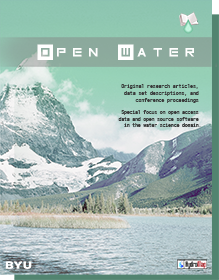Abstract
Microbial contamination of recreational beach waters is often at its worst after heavy rainfall events. Storm flood carries fecal matter and other pollutants from the watershed, join with overflows of untreated sewage from combined sewerage system and flow into the ocean via storm drains and streams, deposited near the beach. In order to understand the phenomena, a model study was conducted aiming to obtain a scientific understanding of hydrodynamic characteristics of the beaches and to characterize the temporal and spatial variations of indicator microorganisms (E. coli) after heavy rainfall events. For this study, GEMSS, an integrated 3D hydrodynamic and transport model was applied to assess the variations of microbial indicators concentration, to develop a scientific warning system, and to support beach management decisions at Sandvika beaches, located in the Oslo fjord. The study is conducted through the Water Quality Tools Project supported by the Norwegian Research Council/Regionale Forskningsfond Hovedstaden at NIVA. The model prediction of beach water quality has been validated against observed data after heavy rainfall event using Nash-Sutcliffe coefficient (E) that ranges from - to 1. The overall result indicates that the model performed quite well in all beaches E = 0.36. The model was calibrated and simulated to investigate the flow structure, spreading of microbial indicators based on different scenarios (microbial decay rate, wind direction, and discharge of toilet tank from boats) so as to calculate the associated risk and to support beach management decision. The simulation result indicates that the risk of contamination of the beach water that affect swimmers is high (above the limit of EU bathing water quality directive) up to two days after heavy rainfall depending on the location of the beach site and wind direction.
BYU ScholarsArchive Citation
Eregno, Fasil Ejigu; Tjomsland, Torulv; Kempa, Magdalena; Heistad, Arve; and Tryland, Ingun
(2015)
"GEMSS Hydrodynamic Modelling Approach to Assess the Risk of Microbial Contamination of Recreational Water after Heavy Rainfall Event,"
Open Water Journal: Vol. 3:
Iss.
1, Article 19.
Available at:
https://scholarsarchive.byu.edu/openwater/vol3/iss1/19
